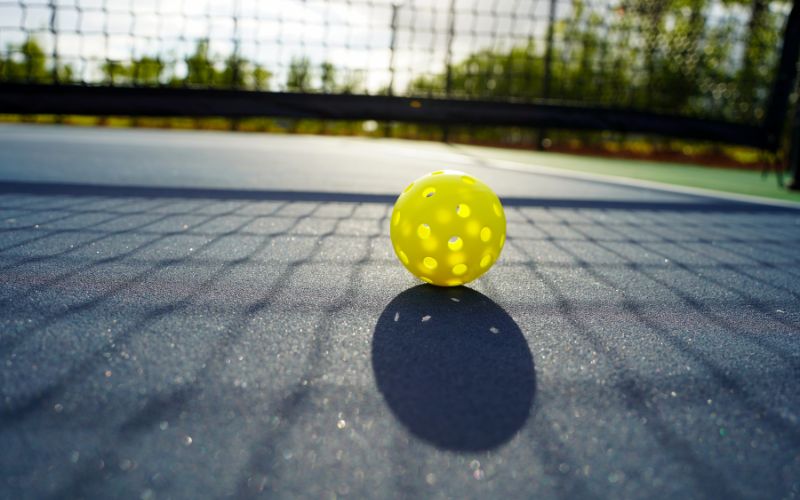Pickleball, a sport that combines elements of tennis, badminton, and table tennis, has been rapidly gaining popularity across the globe. With its fast-paced and engaging gameplay, pickleball appeals to players of all ages and skill levels. One of the fundamental aspects of pickleball is understanding the dimensions of the court where the game is played. In this comprehensive guide, we delve into the specifics of pickleball court dimensions to provide clarity for enthusiasts and beginners alike.
Understanding Pickleball Court Dimensions
Pickleball Courts vs. Other Court Types
Pickleball courts share similarities with tennis courts and badminton courts but possess distinct dimensions tailored to the unique dynamics of the game. While the layout may resemble a tennis court, pickleball courts are considerably smaller in size.
Standard Pickleball Court Dimensions
A standard pickleball court measures 20 feet wide and 44 feet long, which is roughly one-fourth the size of a tennis court. The court is divided into halves by a 34-inch high net, similar to tennis nets.
Components of a Pickleball Court
Boundary Lines
The perimeter of a pickleball court is defined by boundary lines. These lines establish the out of bounds areas where the pickleball game does not occur. The court’s dimensions are marked clearly to ensure adherence to standard measurements.
Non-Volley Zone
A critical aspect of pickleball court design is the non-volley zone, often referred to as the “kitchen.” This area extends 7 feet from the net and prevents players from executing volley shots directly at the net.
Service Boxes
Pickleball courts feature service boxes located on each side of the net. Players serve from behind the baseline and must aim to land the ball within the opponent’s service box.
Court Surface and Net Height
The playing surface of a pickleball court can vary, ranging from asphalt to concrete or even specialized cushioned materials. The net height at the center is 36 inches, consistent with standard regulations.
Doubles and Singles Play
Pickleball accommodates both singles and doubles games, with slightly different configurations. While singles play utilizes the entire court, doubles play involves strategic positioning within designated areas.
Adapting Existing Spaces for Pickleball
Converting Existing Courts
In some cases, existing tennis courts or basketball courts can be repurposed for pickleball by adding temporary lines and nets. This cost-effective approach allows communities to embrace pickleball without constructing new facilities.
Temporary Pickleball Courts
Temporary pickleball courts can be set up in gyms, community centers, or outdoor spaces using portable nets and boundary lines. These setups offer flexibility for casual games and organized tournaments.
Multiple Court Facilities
As the demand for pickleball continues to surge, multi-court pickleball facilities are becoming more prevalent. These venues feature multiple pickleball courts happening side by side, catering to competitive play and recreational events.
Considerations for Building New Pickleball Courts
Space Requirements
When planning a new pickleball court, space permits must be carefully assessed to ensure adequate playing areas and out of bounds space. The dimensions of a pickleball court must adhere to regulatory standards for optimal gameplay.
Measuring and Marking
Precise measurements are essential when marking pickleball court lines. Utilizing measuring tape and adhering to official guidelines guarantees accuracy and consistency across pickleball courts.
Community Engagement
Engaging with local parks and recreation centers can facilitate the development of pickleball courts in public spaces. Collaborative efforts between municipalities and pickleball enthusiasts promote inclusive recreational activities.
Conclusion
In conclusion, understanding the dimensions of a pickleball court is fundamental for players, organizers, and facility managers alike. Whether converting existing spaces or constructing new facilities, adhering to pickleball court dimensions ensures a conducive environment for playing pickleball. As the sport continues to thrive, embracing pickleball’s unique court specifications fosters a vibrant community of players and enthusiasts worldwide.
FAQs About Pickleball Court Dimensions
1. How big is a standard pickleball court compared to other court types?
Pickleball courts are considerably smaller than tennis courts, measuring 20 feet wide and 44 feet long. In comparison, tennis courts are much larger. However, pickleball courts share some similarities with tennis courts in layout but are tailored to the unique dynamics of the game.
2. What are the components of a pickleball court?
A pickleball court comprises boundary lines that define the perimeter, a non-volley zone (or “kitchen”) extending 7 feet from the net, service boxes on each side of the net, and a 36-inch high net at the center.
3. Can existing spaces be adapted for pickleball courts?
Yes, existing spaces like tennis courts or basketball courts can be repurposed for pickleball by adding temporary lines and nets. This cost-effective approach allows communities to embrace pickleball without constructing entirely new facilities.
4. How are temporary pickleball courts set up?
Temporary pickleball courts can be set up in gyms, community centers, or outdoor spaces using portable nets and boundary lines. These setups offer flexibility for casual games and organized tournaments, making pickleball accessible in various environments.
5. What considerations should be made when building new pickleball courts?
When building new pickleball courts, space requirements must be carefully assessed to ensure adequate playing areas and out-of-bounds space. Precise measuring and marking of court lines are essential, and community engagement can facilitate the development of pickleball courts in public spaces, promoting inclusive recreational activities.






